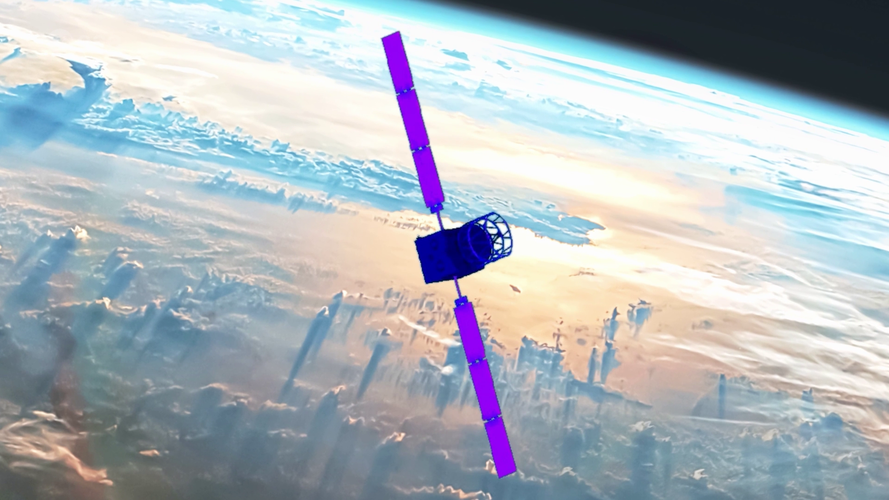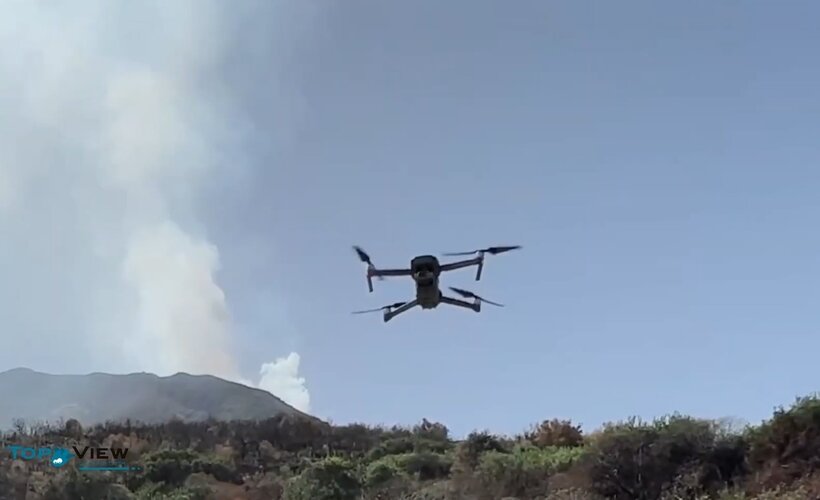
Copernical Team
Journey back to Earth: Aeolus' historic reentry
 Video:
00:05:00
Video:
00:05:00
ESA’s wind mission Aeolus is coming home. After five years of improving weather forecasts, the satellite will return in a first-of-its-kind assisted reentry. At ESA’s Space Operations Centre in Germany, mission control will use the satellite’s remaining fuel to steer Aeolus during its return to Earth.
Find out more about the mission, its successes and how Aeolus is paving the way for safe reentries.
Rescue drones tested within Italian volcanoes

Interconnected drones have been dispatched into volcanic territory to test their use for civil protection, to help guide responses to natural disasters using novel PNT technology. The project, named Pathfinder, is supported through ESA’s Navigation Innovation and Support Programme, NAVISP. Two test campaigns have been undertaken to date, around the active Stromboli Island volcano and within the Astroni Nature Reserve, in a volcanic crater near Naples.
Climate and land use shifts alter Africa's Sudano-Sahelian dryland regions
 A comprehensive understanding of the long-term vegetation dynamics and their potential influences in the Sudano-Sahelian region of Africa is pivotal in progressing sustainable management of these delicate dryland ecosystems. These trends and changes, particularly those not attributable to rainfall, need a more in-depth examination to decode the role of non-climatic factors like land use and land
A comprehensive understanding of the long-term vegetation dynamics and their potential influences in the Sudano-Sahelian region of Africa is pivotal in progressing sustainable management of these delicate dryland ecosystems. These trends and changes, particularly those not attributable to rainfall, need a more in-depth examination to decode the role of non-climatic factors like land use and land On the wing-lets of innovation with NASA Armstrong
 Forty-four years ago this July, NASA began testing a technology that would become one of the agency's most visible and beneficial contributions to commercial aviation - winglets, the upturned ends of airplane wings.
Inspired by the way birds curl their wingtip feathers upward, this innovation was developed by NASA's Langley Research Center in Langley, Virginia. After testing this design in
Forty-four years ago this July, NASA began testing a technology that would become one of the agency's most visible and beneficial contributions to commercial aviation - winglets, the upturned ends of airplane wings.
Inspired by the way birds curl their wingtip feathers upward, this innovation was developed by NASA's Langley Research Center in Langley, Virginia. After testing this design in Hack-A-Sat's Moonlighter Satellite deploys to LEO after successful launch
 Moonlighter reached low earth orbit July 5 after a short visit at the International Space Station and is on track for its inaugural mission: to host an on-orbit cybersecurity challenge during Hack-A-Sat 4 finals, making it the first on-orbit Capture the Flag, or CTF, hacking competition.
It took four years, but "this year, we are in space for real," said Steve C
Moonlighter reached low earth orbit July 5 after a short visit at the International Space Station and is on track for its inaugural mission: to host an on-orbit cybersecurity challenge during Hack-A-Sat 4 finals, making it the first on-orbit Capture the Flag, or CTF, hacking competition.
It took four years, but "this year, we are in space for real," said Steve C The Strategic Use of Varied Orbits: US Space Force's New Mission
 With the majority of artificial objects in space concentrated in the Low Earth Orbit (LEO), it's easy to see why this orbit is a hotbed of activity. LEO, the orbit closest to Earth, is the simplest to access from an energy and rocket power perspective. From the International Space Station and the Hubble Telescope to the approximately 4,000 SpaceX Starlink satellites, the occupants of LEO are notably diverse.
With the majority of artificial objects in space concentrated in the Low Earth Orbit (LEO), it's easy to see why this orbit is a hotbed of activity. LEO, the orbit closest to Earth, is the simplest to access from an energy and rocket power perspective. From the International Space Station and the Hubble Telescope to the approximately 4,000 SpaceX Starlink satellites, the occupants of LEO are notably diverse. Protecting Space Assets through Innovation: Hyperspace Challenge 2023
 U.S. Space Force's Hyperspace Challenge, an innovation accelerator, has declared the commencement of its 2023 program. This endeavor, in collaboration with the Space Rapid Capabilities Office (Space RCO) of the U.S. Space Force, aims to bring together a pool of seasoned researchers and established firms. The objective of the 2023 cohort is to brainstorm novel strategies to enhance the resilience
U.S. Space Force's Hyperspace Challenge, an innovation accelerator, has declared the commencement of its 2023 program. This endeavor, in collaboration with the Space Rapid Capabilities Office (Space RCO) of the U.S. Space Force, aims to bring together a pool of seasoned researchers and established firms. The objective of the 2023 cohort is to brainstorm novel strategies to enhance the resilience Despite doubts from quantum physicists: Einstein's theory of relativity reaffirmed
 One of the most basic assumptions of fundamental physics is that the different properties of mass - weight, inertia and gravitation - always remain the same in relation to each other. Without this equivalence, Einstein's theory of relativity would be contradicted and our current physics textbooks would have to be rewritten. Although all measurements to date confirm the equivalence principle, qua
One of the most basic assumptions of fundamental physics is that the different properties of mass - weight, inertia and gravitation - always remain the same in relation to each other. Without this equivalence, Einstein's theory of relativity would be contradicted and our current physics textbooks would have to be rewritten. Although all measurements to date confirm the equivalence principle, qua MSU studies nutrients that may have fertilized ancient photosynthesis in Earth's oceans
 The Earth is 4.5 billion years old, and, during that time, it has seen some things. Life has been a part of most of that history, but what life has looked like has changed dramatically over the eons.
Deciphering how life worked on this planet during its different epochs is one of the things that Dalton Hardisty works on at Michigan State University.
In fact, he's part of an internati
The Earth is 4.5 billion years old, and, during that time, it has seen some things. Life has been a part of most of that history, but what life has looked like has changed dramatically over the eons.
Deciphering how life worked on this planet during its different epochs is one of the things that Dalton Hardisty works on at Michigan State University.
In fact, he's part of an internati Asteroid-smashing NASA probe sent boulders into space
 When a NASA spacecraft successfully knocked an asteroid off course last year it sent dozens of boulders skittering into space, images from the Hubble telescope showed on Thursday.
NASA's fridge-sized DART probe smashed into the pyramid-sized, rugby ball-shaped asteroid Dimorphos roughly 11 million kilometres (6.8 million miles) from Earth in September last year.
The spacecraft knocked th
When a NASA spacecraft successfully knocked an asteroid off course last year it sent dozens of boulders skittering into space, images from the Hubble telescope showed on Thursday.
NASA's fridge-sized DART probe smashed into the pyramid-sized, rugby ball-shaped asteroid Dimorphos roughly 11 million kilometres (6.8 million miles) from Earth in September last year.
The spacecraft knocked th 